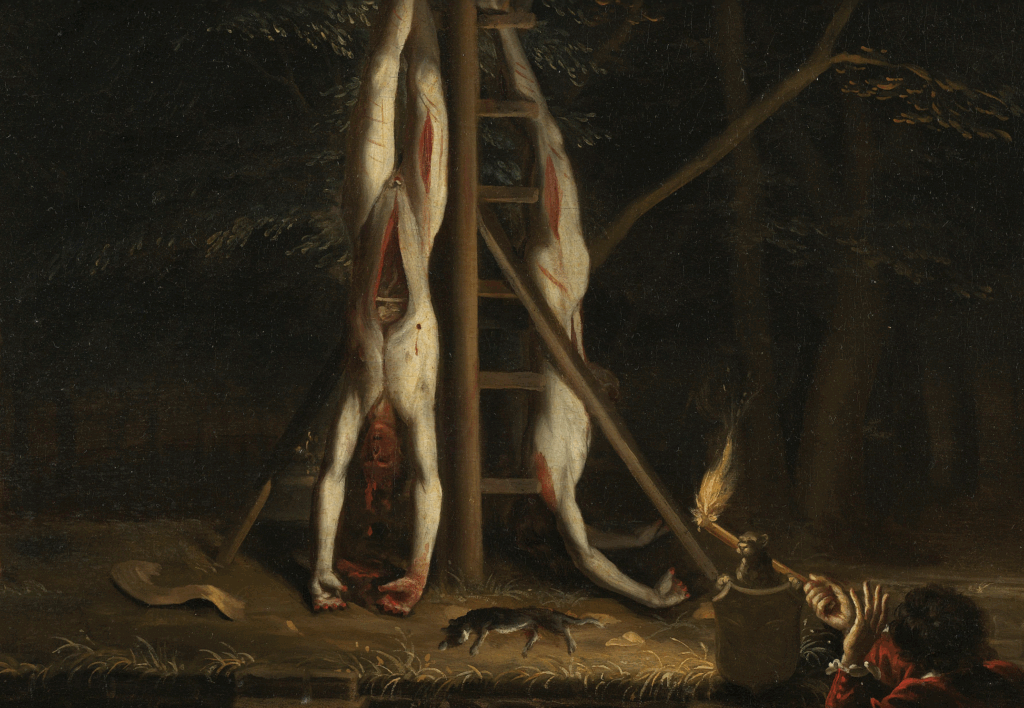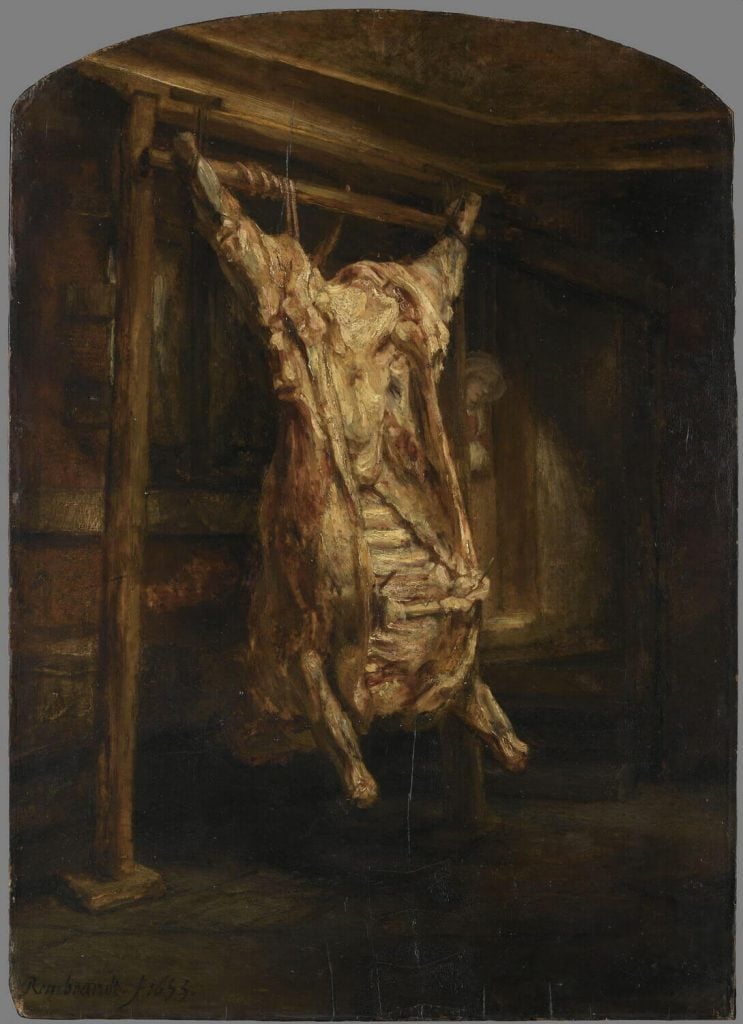Halloween Monsters: What Our Fears Reveal About Society
Halloween monsters have long served as mirrors of human fear and imagination. From vampires and witches to zombies and digital phantoms, they reveal...
Errika Gerakiti 30 October 2025
6 October 2025 min Read
Legend has it that in 1672, two important Dutch statesmen and brothers, Johan and Cornelis de Witt, were murdered, mutilated, and eaten by an angry crowd in The Hague. Today, a gruesome painting hanging in the Rijksmuseum depicts this bizarre episode in the history of the Dutch Republic.
Trigger warning: The painting and its description contain gory details.
The year 1672 was considered Het Rampjaar (The Disaster Year) in the Dutch Republic‘s history. The Dutch people were described as redeloos (irrational), the government as radeloos (distraught), and the entire country as reddeloos (beyond salvation). This state of chaos was followed by an outbreak of war with France (1672–1678) and had a transformative effect on the country’s political makeup. The brothers in question, Johan and Cornelis de Witt, held significant power in the Republic in the years leading up to the war with France, and they were blamed for its outcomes.
While holding high political offices in the Republic, the De Witt brothers openly opposed the House of Orange-Nassau (the Dutch noble house ruling the Netherlands). The Orangists’ political vendetta against the brothers began with the arrest of Cornelis de Witt—who was falsely accused of treason—followed by an interrogation and heavy torture. Ultimately, the Orangists failed to coerce a confession from Cornelis and exiled him from the Republic. Before he managed to leave the country, both he and his brother were brutally executed by an angry mob.
It was on August 20, 1672, that Cornelis and Johan de Witt were first attacked by The Hague’s civic militia and then shot. Their lifeless bodies were undressed, mutilated, and strung up on a public gibbet. The most shocking reports, however, mention the cannibalistic frenzy of the angry mob who, according to conflicting stories, roasted and ate the brothers’ livers and/or carved out their hearts for public display.

Jan de Baen (attributed), The Corpses of the De Witt Brothers, c. 1672–1675, Rijksmuseum, Amsterdam, Netherlands.
The fate of the De Witt brothers remains one of the most infamous episodes of the Dutch Republic’s history. Today, this painting is on permanent display at the Rijksmuseum in Amsterdam and is considered a highlight of the national collection. It is attributed to Jan de Baen (1633–1702), a Dutch portrait painter who worked in The Hague. According to the inscription on the painting, the artist witnessed the events and made it naer het leven (from life). The entire inscription located on the back side of the canvas reads:
These are the bodies of Jan and Cornelis de Witt painted from life by a distinguished painter, while [the bodies] were still hanging on the post at eleven o’clock on the same evening. Cornelis is the one without a wig. Jan de Witt has his hair. This is the only [painting] done from life on 20 August 1672 and therefore it is worth a lot of money.
The mid-sized oil canvas, measuring 69.5 x 56 cm (27 3/8 x 22 1/16 in.), is a night scene with the two mutilated bodies of the De Witt brothers hanging in the center of the composition. They are hung by their feet on a wooden post resembling a ladder. The bodies are pale and carry multiple cuts and open wounds. The most gory element is a cut-open abdomen with the intestines visible inside. The body facing the viewer belonged to Cornelis. His face is covered with blood and his fingers have been cut off. Additionally, his genitals were removed (a detail not mentioned in the written reports of the execution). The body of Johan is visible only sideways, but likely suffered similar mutilations as Cornelis’. A dead cat is also depicted by the bodies of the brothers, as cats were unfortunately associated with evil and treason in early modern European iconography.

Jan de Baen (attributed), The Corpses of the De Witt Brothers, c. 1672–1675, Rijksmuseum, Amsterdam, Netherlands. Detail.
The sky is visible above the dense canopy and although it is a night scene pictured in a dark forest, the bodies are well-lit by the torch held by a man in the foreground of the painting. The dramatic chiaroscuro, warm tonal palette, and choice of subject matter are a striking resemblance to the style of Rembrandt van Rijn, one of the greatest painters of the Dutch Golden Age.

Rembrandt, Slaughtered Ox, 1655, Louvre, Paris, France.
If you have seen the popular British dark comedy series Killing Eve, you may have recognized this painting. It was featured in the show’s second season, episode four, entitled Desperate Times, which takes place in Amsterdam and at the Rijksmuseum.

Still from Killing Eve, S02E04. BBC America.
The show’s antagonist is a contract killer named Villanelle who travels to Amsterdam and visits the Rijksmuseum. Inspired by De Baen’s painting, she murders her target in the Red Light District in the same manner, then sends a postcard of the painting to her love interest, Eve.

Still from Killing Eve, S02E04. BBC America.
Jan de Baen’s gruesome painting is one of the Rijksmuseum’s bizarre artworks that captures a truly disturbing moment of Dutch history. It is important to note that although there are many reports of cannibalistic acts committed by the Dutch mob, there is no hard evidence that this happened.
DailyArt Magazine needs your support. Every contribution, however big or small, is very valuable for our future. Thanks to it, we will be able to sustain and grow the Magazine. Thank you for your help!